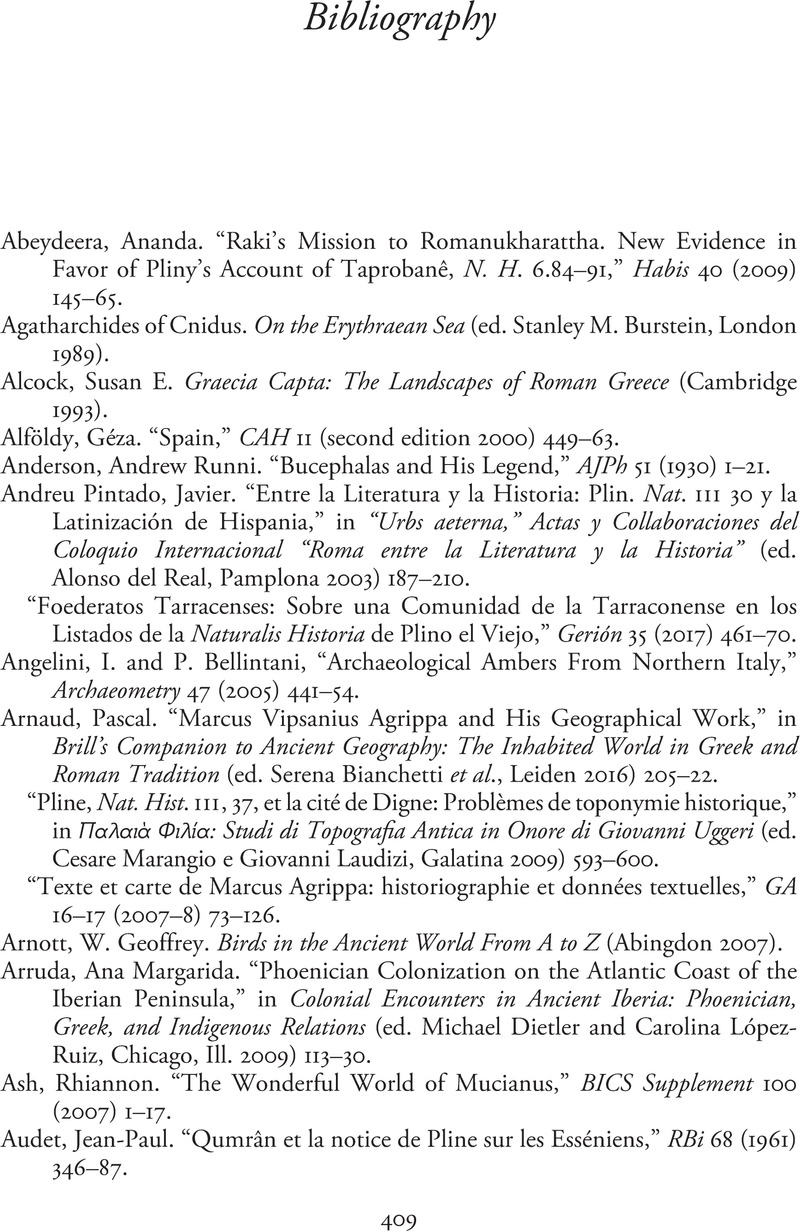Book contents
- A Guide to the Geography of Pliny the Elder
- A Guide to the Geography of Pliny the Elder
- Copyright page
- Dedication
- Contents
- Maps
- Preface
- Abbreviations
- Introduction
- Book 1 Pliny’s List of Sources
- Book 2 Cosmology
- Book 3 Southern Europe
- Book 4 The Greek Peninsula and Interior Europe
- Book 5 Africa and Western Asia
- Book 6 The Remainder of Asia
- Bibliography
- Index of Passages Cited
- General Index
- References
Bibliography
Published online by Cambridge University Press: 07 July 2022
- A Guide to the Geography of Pliny the Elder
- A Guide to the Geography of Pliny the Elder
- Copyright page
- Dedication
- Contents
- Maps
- Preface
- Abbreviations
- Introduction
- Book 1 Pliny’s List of Sources
- Book 2 Cosmology
- Book 3 Southern Europe
- Book 4 The Greek Peninsula and Interior Europe
- Book 5 Africa and Western Asia
- Book 6 The Remainder of Asia
- Bibliography
- Index of Passages Cited
- General Index
- References
Summary

- Type
- Chapter
- Information
- A Guide to the Geography of Pliny the Elder , pp. 409 - 423Publisher: Cambridge University PressPrint publication year: 2022



